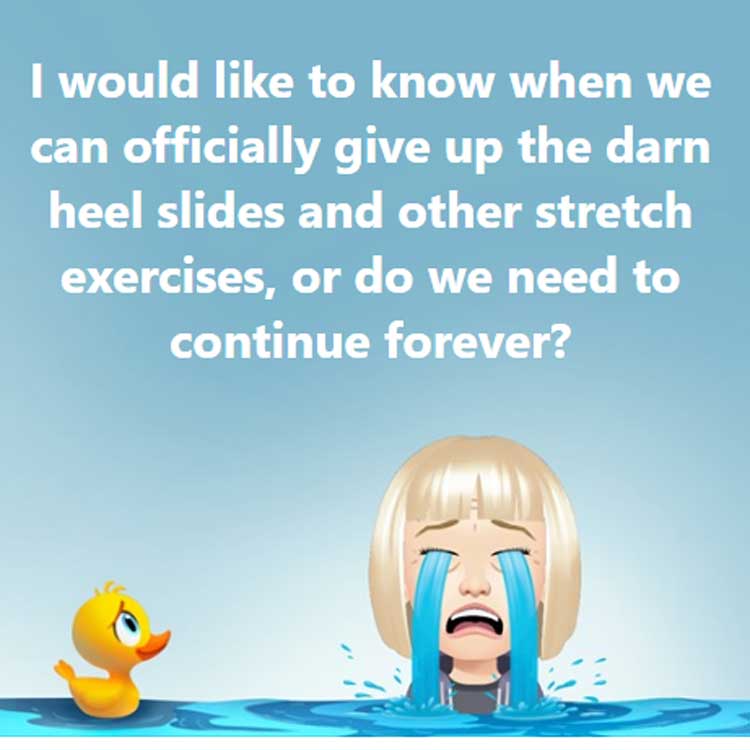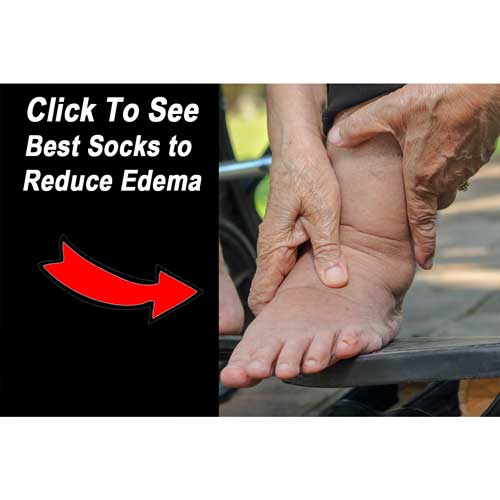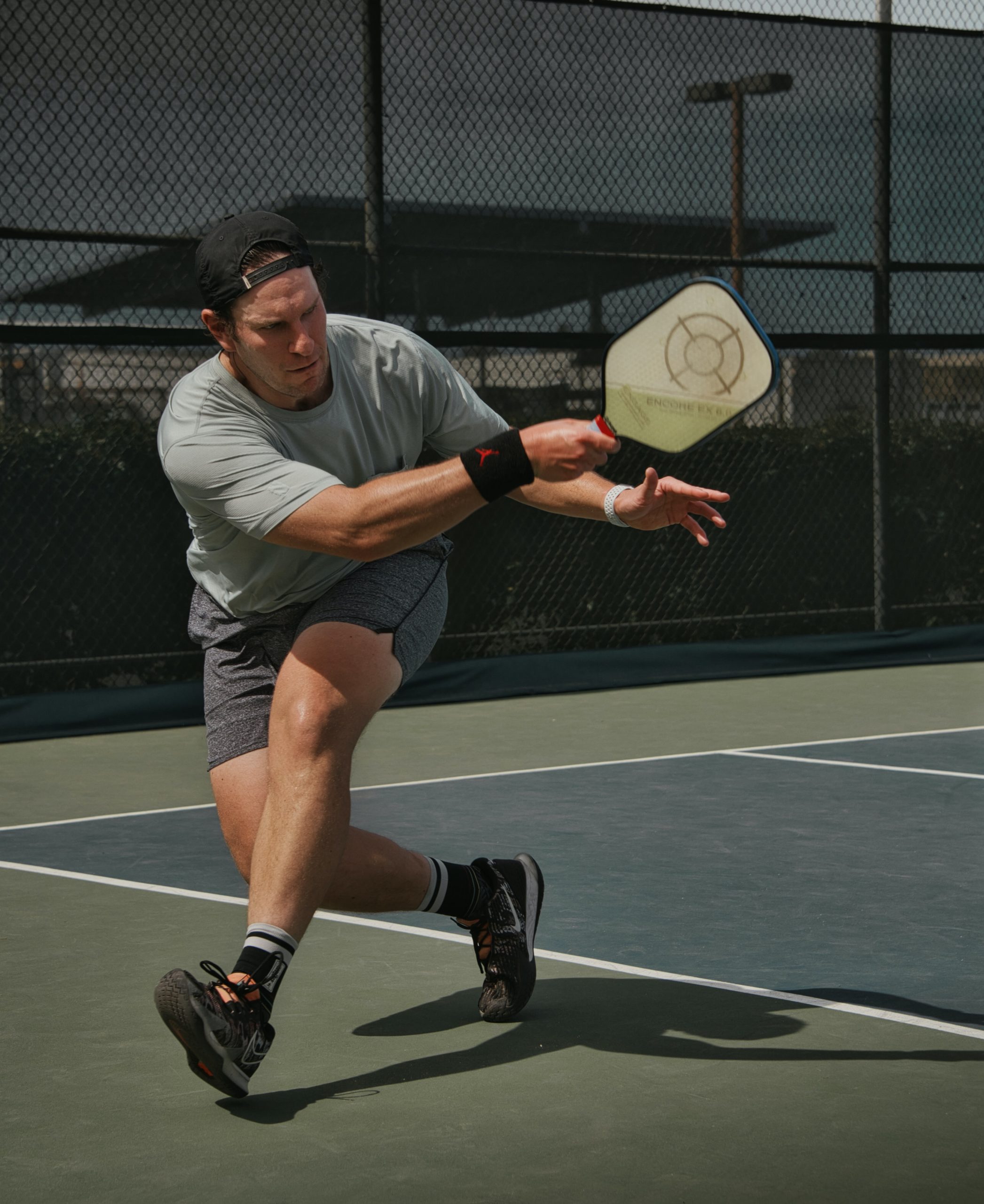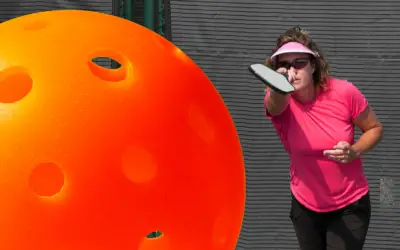Heel Slides After Knee Surgery
“I would like to know when we can officially give up the darn heel slides and other stretch exercises, or do we need to continue forever?”
Heel slides after knee surgery are just one of many exercises available to increase range of motion, reduce swelling, and regain function.
They do not need to be performed once you have progressed to unassisted walking.
This exercise should not be painful or frustrating. If it is then I would recommend you stop doing them and talk to your physical therapist. You may be performing them incorrectly or too agressively.

* Actual Facebook post from our free group Total Knee Replacement Support Group for KIND People.
Heel slides are a commonly prescribed exercise following knee surgery. The purpose of this exercise is to:
- Regain control over the knee extensors (quadriceps muscle) and the knee flexors (hamstring muscle.)
- Reduce swelling by using a “muscle pump” effect which pushes fluid out of the lower extremity with each muscle contraction.
- Improve range of motion.
- Start regaining functional strength.
4 Positions to Heel Slides
- Lying down on your back (Supine)
- Seated in a chair
- Standing at a kitchen counter
- Advanced heel slides
Lying down on your back (Supine)
During the first week after knee surgery, it is common to perform heel slides while lying on your back.
The more friction you have between your heel and the surface you are sliding against the more resistance you will experience.
In some cases patients will use a cookie sheet or plastic bag under their heel to reduce the friction, then as you get stronger and feel more in control you will do things to increase the friction.
This exercise is commonly performed 10 to 15 repetitions every 2 to 4 hours.
The goal is to reduce swelling, improve range of motion, and regain muscle control.
Seated in a chair
As you move past the first week of recovery, many patients will spend less time reclined and more time sitting in a chair.
Heel slides performed in a seated position are very similar to those performed lying on your back.
Use a strap or slippery surface initially to reduce friction, then progress to more resisted slides by increasing friction.
This may again be performed for 10 to 15 repetitions every 2 to 4 hours a day.
The goal at this stage continues to be reduced swelling, improved range of motion, and improved muscle control.
Standing at a kitchen counter
This is a different way to do a heel slide than what you commonly see online.
Since the goal of heel slides at this stage (weeks 2-4 of recovery) is to improve function, performing this exercise while standing and facing a kitchen counter is recommended.
Watch the video to see how it is done.
Heel Slide Variations
Finally, a version of heel slides may be performed in which you move your body to your heels instead of your heels to your body.
This is a more advanced exercise and should only be performed when prescribed by your physical therapist.
Watch the following video for details.

Anthony Maritato, PT
Physical Therapist
Anthony Maritato, PT is an Ohio licensed physical therapist and private practice owner.
Mr. Maritato specializes in helping patients who have received a total knee replacement or rotator cuff repair surgery. Ohio license #PT011602
Related articles:
Pickleball Weight Loss Strategies
How Many Calories Are Burned Playing Pickleball for 60-minutes? Pickleball is a great cardiovascular workout if the intensity is kept high. A play may burn 8-11 calories per minute on the low end going up as high as 15-calories per minute on the higher end. Pickleball...
8 Pickleball Mistakes to Avoid for Beginners
Updated June 03, 2022 One of the main factors that cause beginners to experience setbacks when learning pickleball is doing too much too fast. Throught his article I will discuss the most common 8 pickleball mistakes along with some exercises you can try to prevent...
How much does physical therapy cost after a total knee replacement?
Phyiscal therapy cost varies greatly across locations and service providers. In this article we will examine the cost of physical therapy services for three different patients. One patient has traditional Medicare part B insurance. The second patient has no health...




